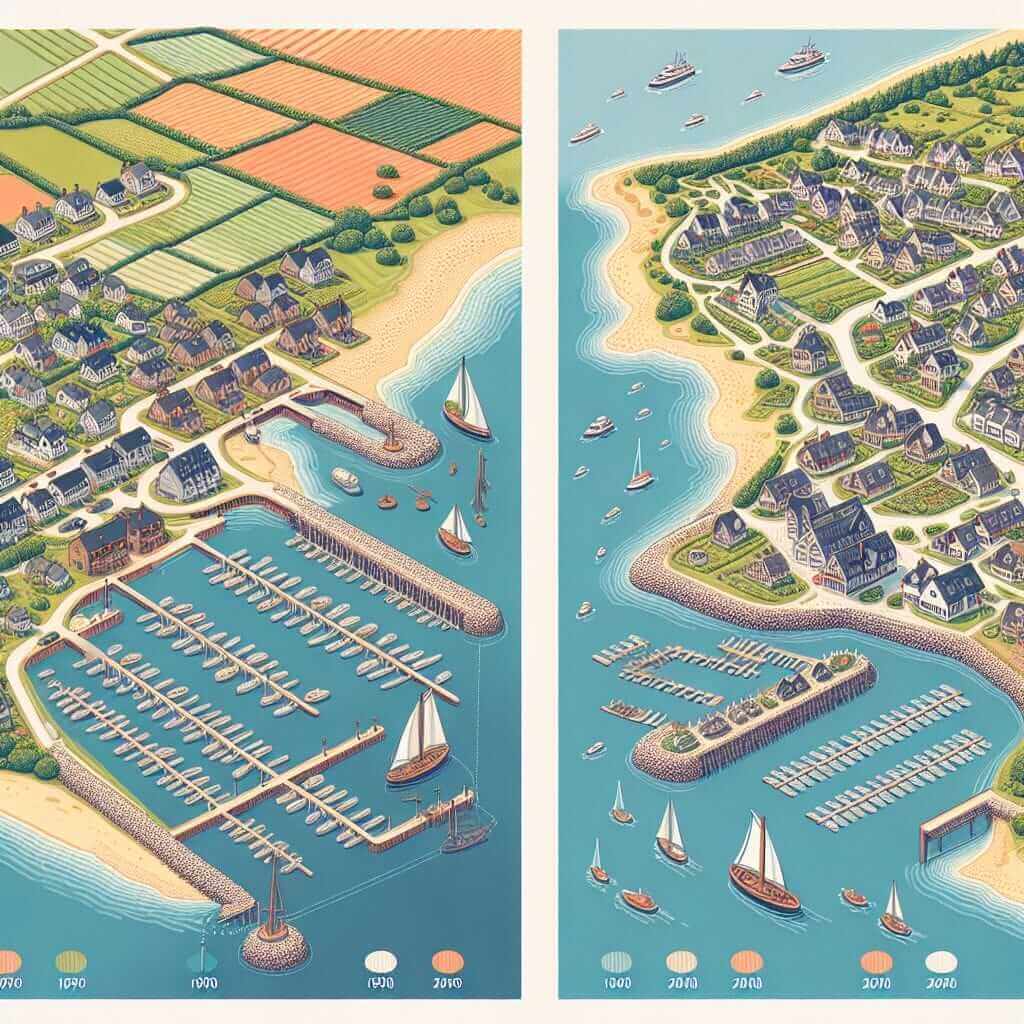As an IELTS instructor with over 20 years of experience, I’ve seen countless students struggle with map description in IELTS Writing Task 1. Many find it challenging to accurately and effectively describe the changes and layouts presented. This guide is designed to equip you with the skills and strategies to confidently tackle any map task.
Understanding Map Description in IELTS
Map description is a crucial skill assessed in the IELTS Writing Task 1 (Academic). You’ll be presented with two maps, often showing the same location at different points in time, or a single map depicting proposed changes. Your task is to write a concise report (at least 150 words) comparing and contrasting the information presented, highlighting key changes and maintaining coherence.
Mastering the Art of Map Description
Here’s a step-by-step approach to effectively describe maps in your IELTS Writing Task 1:
1. Analyze the Maps Carefully
Before you start writing, take a few moments to thoroughly analyze the maps:
- Identify the Type of Map: Is it a map of a city, a town, a park, or a building complex? Understanding the context is crucial for accurate description.
- Pinpoint Key Features: Note down major landmarks, buildings, roads, and natural features (rivers, forests) present in the maps.
- Identify Changes: Pay close attention to any additions, removals, or modifications made to the map between the two time periods or in the proposed plan.
2. Structure Your Response
A well-structured response is essential for clarity and coherence. Here’s a suggested structure:
- Introduction (1-2 sentences): Paraphrase the task information, clearly stating what the maps illustrate. For example, “The maps illustrate the transformation of the town of Willow Creek between 1990 and 2020.”
- Overview (2-3 sentences): Provide a general overview of the most significant changes. For example, “Overall, the town underwent significant modernization and expansion, with the most notable change being the development of a large industrial park in the northern area.”
- Body Paragraphs (2-3 paragraphs): Describe specific changes in detail, using clear language and spatial organization. You can divide the map into sections (north, south, east, west) or group similar changes together.
- Conclusion (Optional – 1 sentence): While not strictly necessary, you can add a concluding sentence to summarize the overall impact of the changes.
3. Use Precise Vocabulary and Grammar
- Prepositions of Place: Use a variety of prepositions to accurately describe locations (e.g., next to, adjacent to, opposite, in the vicinity of, to the north/south/east/west).
- Verbs of Change: Use specific verbs to describe changes (e.g., constructed, demolished, expanded, converted, modernized).
- Passive Voice: The passive voice is often used to describe changes in maps when the agent of change is not important. For example, “A new shopping mall was built in the town center.”
- Comparatives and Superlatives: Use comparatives and superlatives to highlight significant differences (e.g., “The residential area became significantly larger,” “The most noticeable change was the construction of the highway.”).
4. Include Supporting Details and Data
Whenever possible, support your descriptions with specific details and data from the maps. For example:
- “The park, which was originally 5 hectares, was reduced to half its size.”
- “A new railway line, stretching for approximately 2 kilometers, was built to connect the town to the neighboring city.”
Example Map Description
The maps below show the development of a seaside village between 1900 and 2000.
 Seaside Village Development 1900-2000
Seaside Village Development 1900-2000
Description:
The two maps illustrate the dramatic transformation of a small seaside village from a quiet fishing community in 1900 to a bustling tourist destination in 2000.
In 1900, the village was comprised of a small harbor, a handful of houses clustered near the coast, and a large expanse of farmland. By 2000, the village had undergone a complete makeover. The harbor had been expanded to accommodate yachts and pleasure boats, reflecting the growth of tourism. The farmland had been completely redeveloped, replaced by a golf course in the north and rows of holiday cottages to the south.
Perhaps the most noticeable change is the construction of a large hotel complex on the waterfront, signaling the village’s shift towards tourism as its primary industry. Additionally, a network of roads and a car park were built to cater to the influx of visitors. The original village, while retaining some of its charm, is now dwarfed by the scale of development around it.
Tips for Success
- Practice Regularly: Familiarize yourself with different map types and practice describing them regularly.
- Focus on Clarity and Accuracy: Avoid vague language and ensure your descriptions are accurate and easy to understand.
- Manage Your Time: Allocate your time wisely during the exam to allow for planning, writing, and proofreading.
- Proofread Carefully: Check for any grammatical errors, spelling mistakes, or inconsistencies in your writing.
Remember, describing maps effectively is a skill that improves with practice. By following these guidelines and honing your language skills, you can approach the IELTS Writing Task 1 map description with confidence and achieve your desired score.


